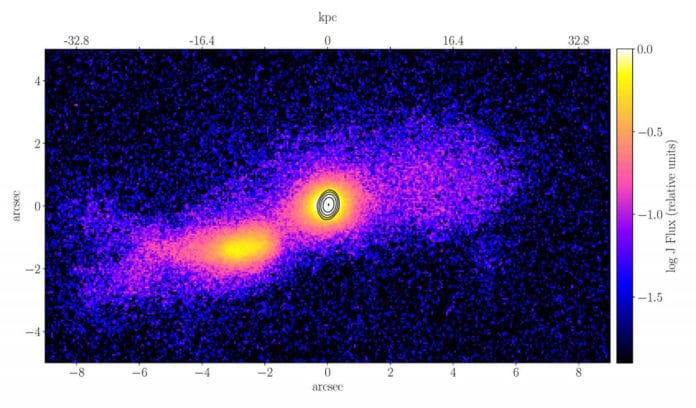Scientists at the Clemson University College of Science, in collaboration with international colleagues, recently offered proof that merging galaxies can produce jets of charged particles, traveling at the speed of light.
They have captured relativistic jet emerging from two younger, spiral-shaped, colliding galaxies.
The jet is so young that it enables scientists to see its host.
This is for the first time, scientists have captured two galaxies merging where there is a fully formed jet pointing at us. However, the jet is not so bright to blind us.
Professor Stefano Marchesi of the department of physics and astronomy said, “All you can see is the flashlight. This jet is less powerful, so we can see the galaxy where it is born.”
The team’s image captured the two galaxies, a Seyfert 1 galaxy known as TXS 2116-077 and another galaxy of similar mass, as they were colliding for the second time because of the amount of gas seen in the image.
The team captured the image using one of the largest land-based telescopes in the world, the Subaru 8.2-meter optical, infrared telescope located on a mountain summit in Hawaii. They performed subsequent observations with the Gran Telescopio Canarias and William Herschel Telescope on the island of La Palma off the coast of Spain, as well as with NASA’s Chandra X-ray Observatory space telescope.
Journal Reference:
- TXS 2116-077: A gamma-ray emitting relativistic jet hosted in a galaxy merger. DOI: 10.3847/1538-4357/ab754f
